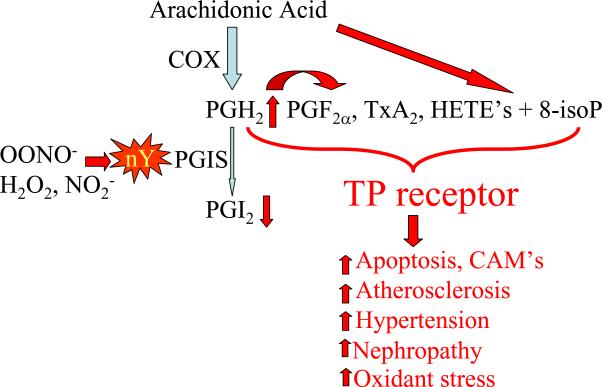Figure 2.
Tyrosine nitration (nY) of prostacyclin synthase (PGIS) increases stimulation of thromboxane A2 (TP) receptors. Nitration of PGIS at tyrosine-430 inactivates the enzyme resulting in shunting of arachidonic acid metabolites to products that stimulate the TP receptor. Cyclooxygenase produces prostaglandin endoperoxide (PGH2) which produces more prostaglandin (F2α) and thromboxane (Tx) A2. More arachidonic acid derived hydroxyeicosatetraenoic acids (HETE's) also are produced. Furthermore, oxidants generate more 8-isoprostanes (isoP) directly from arachidonic acid which also stimulates TP receptors. These products can all be implicated in apoptotic and inflammatory cell responses, increased atherosclerosis, hypertension, and nephropathy. TP receptor stimulation also further augments the generation of reactive oxygen species.

